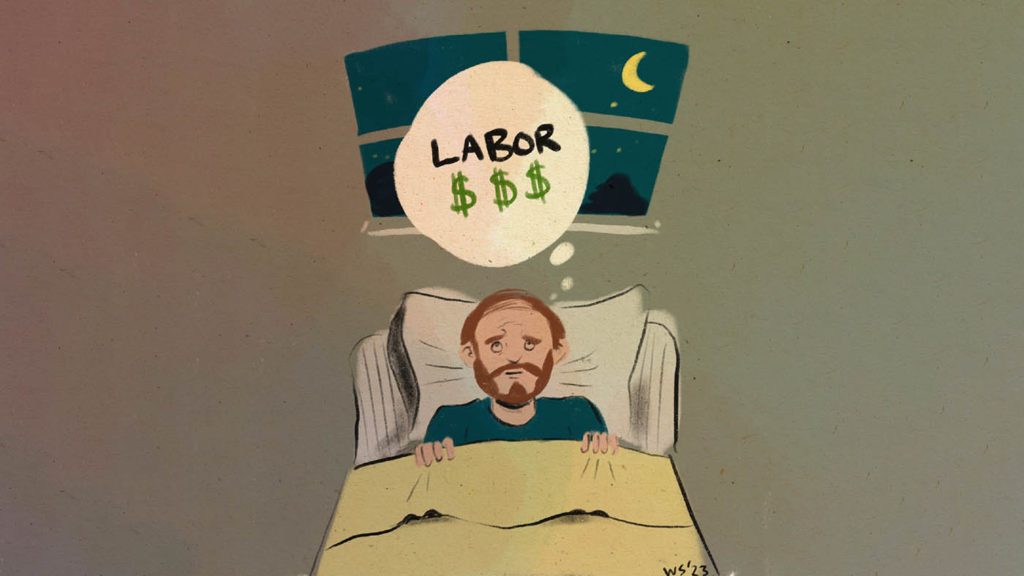By Zhengfei Guan and Kuan-Ming Huang
In a packed conference room at an industry event, a Florida grower sitting in a discussion panel was asked: “You wake up at 2:00 in the morning. What worries you the most?”

“Labor,” answered the grower without a second of doubt.
Labor has been an issue that bothers not only Florida farmers but those in the entire U.S. agricultural sector. Ever since humans started farming in ancient times, manual labor has been the most important component in agricultural production. This has not changed much, even in an economy as sophisticated as the United States where agriculture only accounts for a small percentage of the gross domestic product. But the loss of the dominant role of agriculture in the economy seemed to have also taken with it the attractiveness of farm jobs. In the last few decades, labor shortage has been a chronic issue plaguing U.S. agriculture. Besides shortages, there are a host of issues associated with farm labor in the United States.
WHY ARE THERE LABOR SHORTAGES?
In the last couple of years, labor shortages coupled with supply-chain disruptions have affected various sectors of the economy and have been much discussed in the media. So, the consequence of labor shortages has been well understood. But compared to such economy-wide shortages caused by special circumstances such as the pandemic, the decades-long labor shortages in the farm sector are a completely different story. Much of it is inherently built in due to the nature of the sector. It is not likely to go away anytime soon.
Compared with waiting on tables in restaurants or working for Walmart, the outdoor work environment in agriculture is much more challenging. Agricultural field work is physically demanding. In addition, agriculture is seasonal. For the majority of farmworkers, this means their jobs are temporary. For income stability and job security, they would rather choose to work elsewhere. Some workers may choose to work in agriculture by migrating across states to follow crops to increase their employment over the season, but this means sacrificing a stable lifestyle and oftentimes family life. Since the economy and job opportunities in non-agricultural sectors have expanded, there simply isn’t much incentive left for workers to take farm jobs.
Some may argue that growers can just increase wages to make them high enough to attract sufficient workers. Theoretically, this sounds right. But in a real-world open economy with free trade, there is no way for high-cost products to compete with low-cost foreign commodities. In the U.S. specialty crop sector that has suffered severe labor shortages and intense foreign competition, growers are already struggling to stay in business.
DEPENDENCY ON FOREIGN WORKERS
In states like Florida and California where the labor-intensive specialty crops make up the lion’s share of agriculture, labor challenges are especially problematic. Labor shortages in Florida have been so serious that the state’s growers hired the largest number of foreign guest workers (approximately 45,000) among all states in 2021, followed by Georgia (~35,000) and California (~32,000). These workers are brought to the country under the H-2A program, which admits foreign guest workers into the United States under the H-2A visa for temporary agricultural work. In the past decade (2011–2021), the number of certified H-2A workers more than tripled from about 90,000 in 2011 to approximately 320,000 in 2021.
Hiring guest workers has helped alleviate the labor shortage problem. But there is no free lunch. There are several issues with the guest worker program. For example, hiring guest workers involves the bureaucracy of going through multiple government agencies and a long waiting time. Farmers risk losing their crops if workers do not arrive by harvest time.
In addition, employers must pay for the housing and transportation for these workers, thus incurring additional costs. Most importantly, when offering jobs to foreign workers, the government needs to ensure that the domestic labor market is not adversely affected. Hence, every year, the Department of Labor publishes an adverse effect wage rate (AEWR) for each state, which is the minimum hourly wage required for hiring H-2A workers. This wage rate could be 35% higher than the statutory minimum wage in that state. This further increases the cost of production.
RISING MINIMUM WAGES
Things went from bad to worse for farmers when states started passing laws to increase minimum wages. In 2020, Florida approved a bill to increase the minimum wage from $8.65 to $15 per hour by 2026, a 75% increase over five years. This is good news for workers but bad news for growers. Especially for specialty crop producers in the southeastern states such as Florida and Georgia, where growers have been struggling to stay in business because of the cut-throat competition from Mexico that has ample labor at a wage rate nearly 10 times lower. The rising state minimum wages will further push up the AEWR for guest workers, thus having broader implications.
With persistent labor shortages, rising wage rates and the threat of low-cost foreign competition, there seems to be no feasible long-term solutions that could arise from within the domain of labor. Farmers are looking to innovation such as mechanization and automation to come to their rescue and help them stay in business.
Zhengfei Guan is an associate professor, and Kuan-Ming Huang is a postdoctoral associate, both at the University of Florida Institute of Food and Agricultural Sciences Gulf Coast Research and Education Center in Wimauma.










